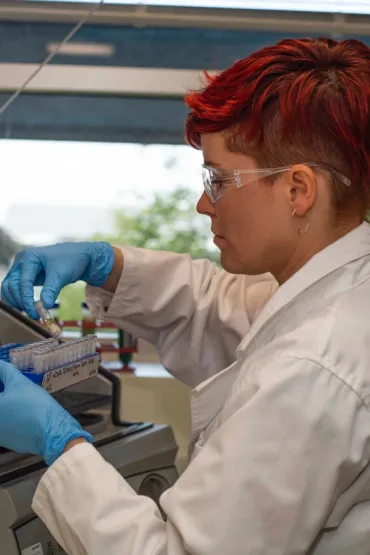Research project title
Leanyer Sanderson Wastewater Pond Microbiology
Abstract
The Leanyer Sanderson Wastewater Stabilisation Ponds were built in 1972 and are the largest in Northern Australia. Before this study, the knowledge of pond bacteria was limited to the culturable Escherichia coli and enterococci. Unfortunately, a focus on these bacteria misses the majority of resident pond bacteria, their responses to the tropical environment, and the dynamics of important bacteria like nitrogen cyclers.
The thesis primary research objectives were to (1) identify the microbial community composition in the ponds; (2) identify the genes and microbes responsible for pond nitrogen cycling; and (3) investigate how the microbial community responds to desludging. To address objectives (1) and (2), 288 wastewater samples were collected at the inlet, middle and outlet of Sanderson Ponds 1, 2 and 5 in the morning (6 am) and afternoon (1 pm) during the early wet and dry seasons. For objective (3), 96 samples were collected in a similar manner from Leanyer Pond 2 before desludging and then one week, six months, and 12-months after. Measurements included both in situ physico-chemistry and microbial DNA (or RNA). The 16S rRNA gene was sequenced to determine the bacterial community composition and the Functional Gene Array used to determine the activity of nitrogen cycling genes.
The results showed that bacteria typically associated with the human gut are replaced by environmental bacteria as effluent progresses through the ponds and that desludging improves the removal of faecal bacteria and nitrogen. The study determined where and how nitrogen is removed from the pond system. For each pond, a unique fingerprint was identified and consisted of faecal and environmental bacteria-indicators that can be used for pond management and for developing new tests for human faecal pollution in the environment. Thus, demonstrated that DNA-based detection methods can provide powerful and cost-effective monitoring tools that can be used both by wastewater managers and environmental regulators.
Research interests
Alea Rose is a Research Institute for the Environment and Livelihoods (RIEL) PhD graduate who was supervised by Prof. Karen Gibb. She has a Bachelor of Science Degree in Marine Biology and a first-class Honours qualification in wastewater treatment with encapsulated microalgae. Following her postgraduate study at Charles Darwin University, she is interested in pursuing a career in wastewater management or general molecular research. Other interests include (not limited to): bioremediation research using algae, bacteria and polychaetes; molecular biology (eDNA, bacterial ecology); and the aquatic life cycles of flora and fauna potentially useful for aquaculture. Alea currently works as a technical officer for the Environmental Chemistry and Microbiology Unit (ECMU). Her work involves providing assistance in the microbiological and molecular aspects of research and consultancy activity in ECMU, quality technical assistance in laboratories and fieldwork, sample preparation, processing and data analyses on a wide range of sample types. She also provides ad hoc research support and skills transfer for CDU staff, Research Fellows and postgraduate students (Honours, Masters and PhD students).
